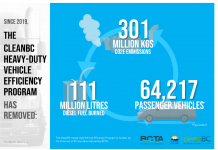Signs, signs, everywhere there are signs… Reading and understanding them is extremely important, even if you have seen the signs hundreds of times. If you are driving in the US, it can become a serious problem, as all vertical clearance, narrow road, and weight restriction signs use the imperial measurement system, not the metric system. As a general rule of thumb, a typical semi with a 53 ft trailer is 74 ft long, 13 ft 6 in tall, 8 ft 6 in wide, and has a maximum weight of 80,000 lbs, which is 40 tons.
So why should you always read every sign? First and foremost, they will help lead you to your destination. If you get turned around or lost, they can guide you back to where you started. Even if you are going to a place you have been to many times before, there may be a temporary detour. However, if you have been paying attention to all the signs each time you have been there, you will have a good idea of where to go and what to expect.
While reading all the signs is important, understanding them is even more crucial, especially in relation to your truck and trailer. A few years back, a driver completely destroyed a national historic bridge because they claimed they didn’t know that their 75,000 lbs truck exceeded the posted 5-ton weight limit of the bridge! There are also certain truck routes that a full-size semi cannot use due to their size. One that catches a few drivers every week is the Detroit-Windsor tunnel. Just today, there was a truck stuck on a bridge in South Dakota. His 16 ft wide load didn’t fit over a 14 ft wide bridge.






















